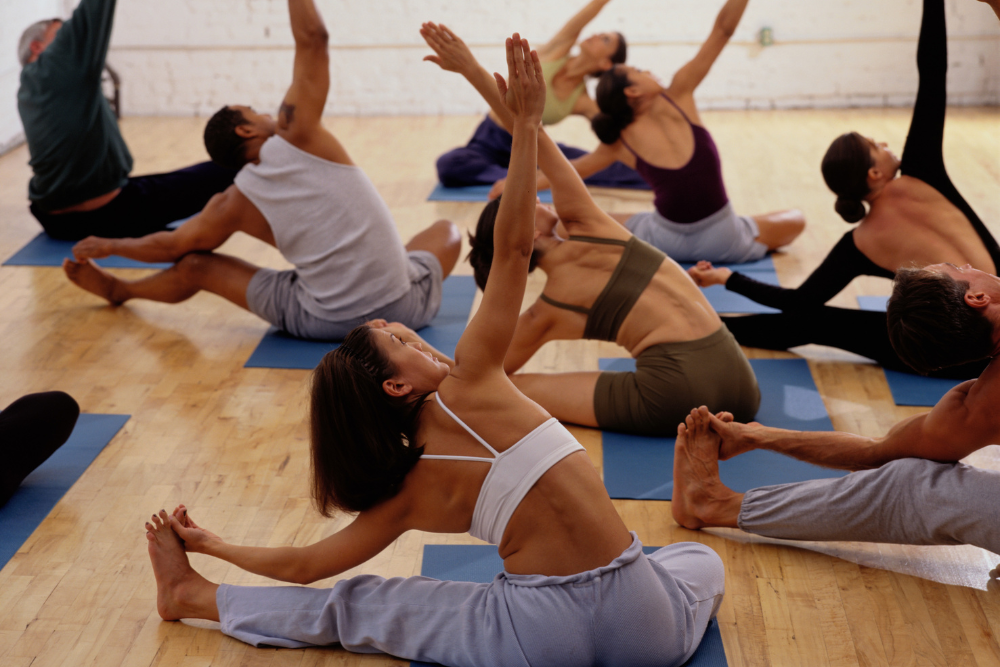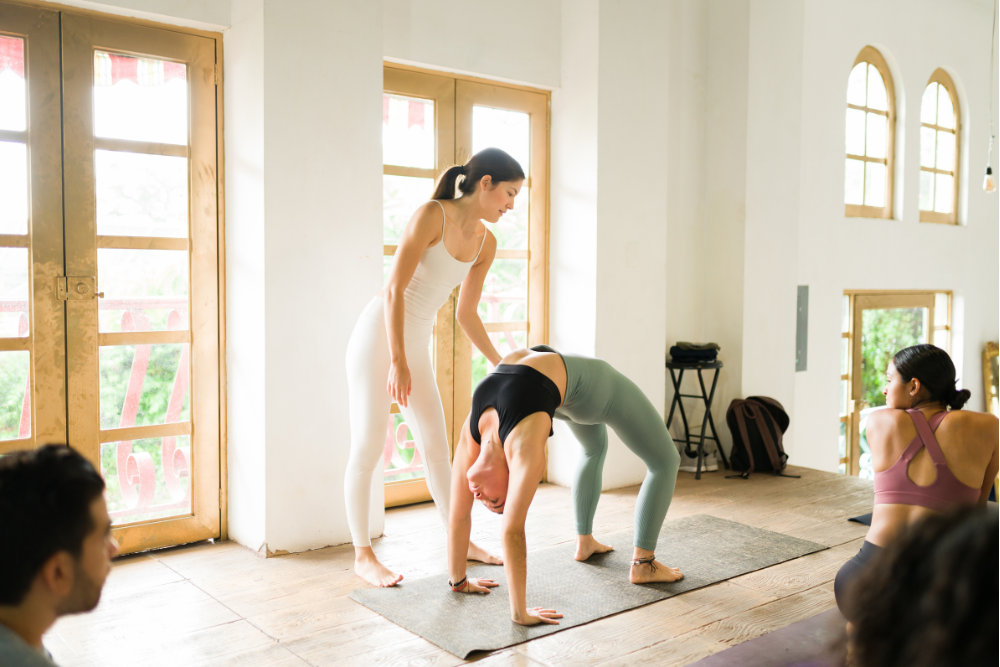Yoga is a comprehensive discipline that integrates physical postures, controlled breathing, meditation, and ethical principles to enhance overall well-being. While it may seem foolproof, the reality is that improper practice can result in injuries. Despite its myriad health benefits, yoga-related injuries are not uncommon. Without proper care and precaution, practitioners can experience discomfort or even serious harm. Thus, it’s imperative to approach yoga with mindfulness, awareness, and correct technique to ensure a safe and fulfilling practice. In this article, we’ll explore essential tips for avoiding yoga injuries.
Expert Tips for Avoiding Yoga Injuries as a Beginner
Listen to Your Body

Yoga encourages self-awareness, and it’s essential to listen to your body during practice. Depending on your personality, your yoga instructor, and your fellow classmates, it can be easy to get a bit competitive. Pay attention to any discomfort, pain, or strain. If a pose feels painful, modify it, or skip it altogether. Pushing yourself too hard can lead to injuries, so honour your body’s limitations and gradually progress as your flexibility and strength improve.
Understand that some days may be better days than others. Your sleep, diet, and focus can all affect your performance. Instead of thinking “I did this pose last week,” or “Joe is rocking this pose, I need to do better,” listen to what your body is telling you. If it’s a day to push yourself, then great. If it’s a day to hold back, then hold back.
Choose the Right Class

One of the first steps in preventing yoga injuries is to choose the appropriate class based on your experience and fitness level. If you’re a beginner, opt for beginner-friendly classes where instructors provide detailed instructions on alignment and technique. As you progress, you can explore more advanced classes.
Choose a Skilled Yoga Instructor

Yoga is extraordinarily popular. There are classes in just about any community across the country. The vast growth of yoga means an increasing number of instructors. However, all instructors are not created equally. Some are quite skilled. Others, not so much.
The unskilled or questionable instructors can cause injuries by pushing students too far or by positioning your body in a pose that you’re not ready for. Pay attention to your instructor’s demeanour. How do they handle beginner students? Additionally, review their credentials. How long have they been teaching and where did they get their certification?
Go Easy and Warm-Up Properly

Everyone starts yoga at the same place, as a beginner. Allow yourself to be a beginner and ease into the practice. It can take some time to find the right instructor and yoga type for your needs and personality. Allow yourself time to learn and your body time to adapt.
Additionally, give your body time to warm up and cool down before class. Warming up is crucial before diving into more challenging yoga poses. Start with gentle stretches and basic movements to prepare your muscles, joints, and connective tissues for the practice ahead. A proper warm-up increases blood flow, flexibility, and reduces the risk of strains or sprains.
Focus on Alignment

Correct alignment is fundamental to preventing injuries in yoga. Each pose has a specific alignment, and deviating from it can strain muscles and joints. Attend classes with experienced yoga instructors who can guide you through proper alignment or use props to assist you in maintaining the correct form.
Gradual Progression

Yoga is a journey of self-discovery and improvement. Avoid the temptation to push yourself into advanced poses without proper preparation. Progress gradually, mastering foundational poses before attempting more challenging ones. This approach allows your body to adapt, reducing the risk of overuse injuries.
Use Props Wisely

Yoga props, such as blocks, straps, and bolsters, are excellent tools to assist in achieving proper alignment and provide support. Incorporate props into your practice as needed, especially if you are recovering from an injury or working on improving flexibility in certain areas.
Stay Hydrated

Hydration is crucial for overall health and plays a significant role in injury prevention. Dehydration can lead to muscle cramps and fatigue, increasing the risk of accidents during yoga practice. Ensure you are adequately hydrated before, during, and after your session.
Incorporate Cross-Training

Variety in physical activity is essential for a well-rounded fitness routine. Consider incorporating cross-training activities such as strength training, cardio exercises, or flexibility-focused activities to complement your yoga practice. This helps prevent muscle imbalances and reduces the risk of overuse injuries.
Approaching yoga with mindfulness and caution enhances its beauty and transformative power. By selecting appropriate classes, tuning into your body’s signals, prioritizing alignment, and integrating these guidelines into your routine, you can reap the physical and mental rewards of yoga while minimizing injury risks. Remember, yoga is a personal journey, and safety is paramount for a sustainable, lifelong commitment to this ancient practice.
Furthermore, consistency is key. Rather than sporadic attendance, aim for regular practice sessions to allow your body to adapt, become more flexible, and build strength gradually, reducing the likelihood of yoga injuries. Embrace yoga as a holistic practice for body, mind, and spirit, and approach it with gentleness and care to ensure a fulfilling experience year-round.
